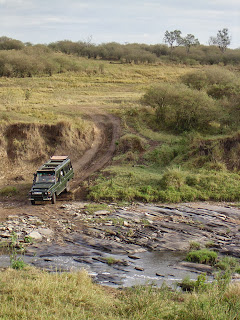***
East Africa’s volcanos, lakes
and wildlife are a major character in my novel. Breath of Africa was written as
a catharsis when I relocated to the UK
twelve years ago, after living for fifty-five years in Kenya. For me,
the storyline was secondary to the nostalgic memories I nursed. But thanks to
professional advice, my readers have found the book “hard to put down.”
 African
scenery was etched in my soul from the time I wandered up a stony path as a six
year old schoolgirl, with the forest-topped rim of Menengai Crater brooding
over me. I paused, spied a dandelion head and puffed it away with one blow. My
wish was to travel the world - which I achieved by my 60th birthday – but my
heart was in Africa.
African
scenery was etched in my soul from the time I wandered up a stony path as a six
year old schoolgirl, with the forest-topped rim of Menengai Crater brooding
over me. I paused, spied a dandelion head and puffed it away with one blow. My
wish was to travel the world - which I achieved by my 60th birthday – but my
heart was in Africa.
Menengai, the
third largest crater in the world, played a part in the book’s budding romance:
“As evening fell, grey clouds crept along the crater depths and
swirled up the cliffs, snatching at them with wispy fingers, as the wind caught
and tossed the vapours into nothingness among the trees.
“…A sudden movement
distracted them. Brian turned off the track, parting the long grass in front of
him.
‘Careful of
snakes!’ Caroline warned.
“She followed,
treading in his footsteps. As they approached the thrashing, it increased, and
she saw the soft brown hide of a female impala,its eyes wide with fright. One
leg was caught in a loop of wire.
‘It’s a trap, but
the wire hasn’t tightened too much. I’ll see if I can free her.’
“Brian caught hold
of the leg, and the animal stilled. She seemed to know they were trying to
help. He struggled with the wire and eased it over the hoof. He let go. The doe
stood there for a second, then moved her leg and took a small step. She bounded
away and the grass closed behind her. It was as if it had never happened.”
Ngorongoro Crater
in Tanzania
was another scene, which progressed the relationship between Caroline and
Brian. I went on a memorable safari there in the mid-sixties, and Caroline’s
feelings as she first laid eyes on this wonder were my own.
Towards the end of
the book, as Caroline approaches the evening of her days, she visits Richard
Leakey’s famous desert camp on the eastern side of Lake Turkana in Kenya’s
northern district. Here, a romance is nipped in the bud. These pictures were
taken on my safari there in the 1980’s. Central Island,
where I am sitting, features in the book, the pink rim round the lake totalled
3,000 flamingos. The desolate site of the petrified forest is not far from
Koobi Fora.
And the dramatic
climax of the book takes place at a sand river in the extreme south of Kenya near a
soda lake.
 “A second roar, more disturbing than the howl
of the Mau Mau, filled his world, moving, rocking, spinning. He was flung from
side to side, bruising painfully against the gear lever. His head bumped on the
roof, his nose banged the windscreen; water everywhere. He couldn’t breathe…”
“A second roar, more disturbing than the howl
of the Mau Mau, filled his world, moving, rocking, spinning. He was flung from
side to side, bruising painfully against the gear lever. His head bumped on the
roof, his nose banged the windscreen; water everywhere. He couldn’t breathe…”
I don’t have a
photograph of this desolate region, but here is one of what the place might
have been like, in the aftermath.
***
Jane Bwye has been a businesswoman and intermittent freelance journalist for fifty years, mostly in Kenya. She cut short an Oxford career to get married, was widowed in her early twenties, and left with three small children – but was lucky enough to remarry. Now her six children and seven grandkids are scattered over three continents, so she’s developed a taste for travel. She has “walked” round the world, buying a bird book in every country she visited.
She has edited a cookbook, “Museum Mixtures”, in aid of the Kenya Museum Society, and is working on a short History of her local church. Her first novel, Breath of Africa, which is dedicated to the youth of Kenya, had a gestation period of thirty years. The plot and characters are fictitious, but the story draws on Jane’s experiences in a country going through the throes of re-birth.
You can find out more about Jane and Breath of Africa on her site and blog
BREATH OF AFRICA
Thirty years of Kenya’s recent history unfold through the lives of Caroline, a privileged woman from the fertile highlands, and Charles Ondiek, a farm labourer with dreams of an Oxford education.
Charles’s love for
Teresa, daughter of a hated settler farmer, leads to a drama of psychological
terror fuelled by Mau Mau oath administrator, Mwangi, who is held in detention
for six years.
On his release,
Mwangi forces Charles and Teresa apart, then turns his attention to Caroline…
Against the backdrop of Kenya’s
beautiful but hostile desert, the curse is finally broken. But when Caroline
discovers the hidden reason for Mwangi’s hatred, she wonders if she’ll ever,
really, belong in the country she loves.


























